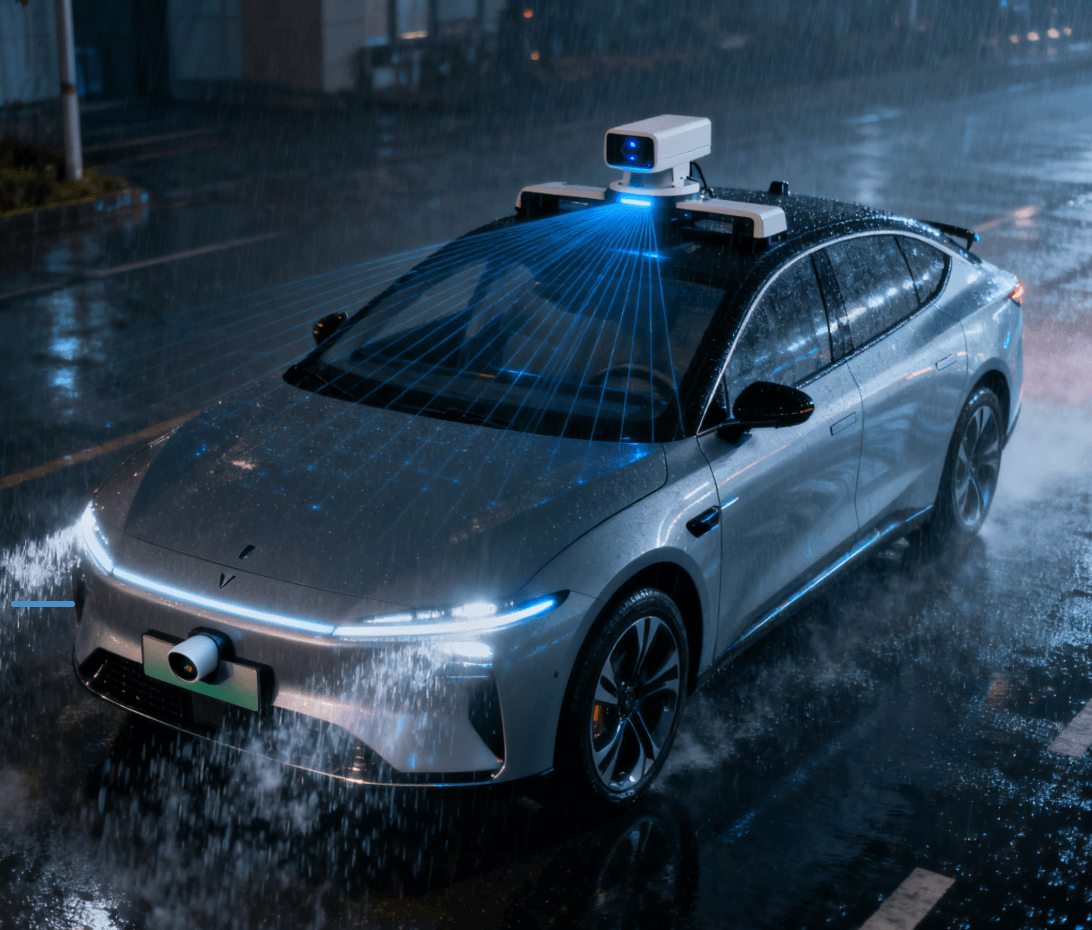Autonomous vehicles, smart transportation systems, and industrial automation increasingly rely on advanced sensing technologies. Among the most widely used are LiDAR (Light Detection and Ranging) and mmWave radar. While both technologies detect and track objects, they differ significantly in operation, strengths, and applications. Understanding these differences is essential for engineers, developers, and businesses selecting the right sensing solutions.
How LiDAR Works
LiDAR uses laser light pulses to measure distances to objects. By emitting thousands of light pulses per second and analyzing the return times, LiDAR creates high-resolution 3D maps of the environment.
Key points about LiDAR:
-
High spatial resolution: Detects small objects with millimeter-level precision.
-
3D environment mapping: Generates detailed point clouds showing shapes and distances.
-
Line-of-sight requirement: Performance drops when obstacles block the signal or in conditions like fog, rain, or dust.
Applications of LiDAR:
-
Autonomous vehicle navigation and obstacle detection
-
High-precision mapping and surveying
-
Industrial robotics for accurate object positioning
How mmWave Radar Works
mmWave radar operates using high-frequency radio waves, typically between 24 GHz and 81 GHz. It calculates distances, angles, and speeds of objects by analyzing the reflected radar signals.
Key points about mmWave radar:
-
All-weather capability: Works reliably in rain, fog, snow, and dust.
-
Velocity detection: Measures object speed through the Doppler effect, supporting collision avoidance.
-
Compact and cost-effective: Modern sensors can be integrated into vehicles and industrial equipment efficiently.
Applications of mmWave radar:
-
Automotive safety: adaptive cruise control, blind-spot monitoring, collision warning
-
Smart traffic systems: vehicle and pedestrian detection in all weather
-
Industrial automation: object monitoring and collision prevention
Comparing LiDAR and mmWave Radar
| Feature | LiDAR | mmWave Radar |
|---|---|---|
| Operating principle | Light pulses | Radio waves (millimeter wave) |
| Resolution | High, millimeter-level | Moderate, suitable for object detection |
| Weather performance | Sensitive to fog, rain, snow | Resistant to adverse weather |
| Penetration | Limited; blocked by obstacles | Can penetrate rain, dust, some obstacles |
| Speed measurement | Not inherent | Doppler effect allows accurate velocity measurement |
| Cost & size | Higher cost, larger system | Lower cost, compact sensor |
| Best suited for | High-precision mapping and modeling | Robust detection, speed measurement, all-weather operation |
Why Combining LiDAR and mmWave Radar Is Effective
Using both LiDAR and mmWave radar provides complementary advantages:
-
Enhanced safety: Radar ensures reliable detection in poor visibility, supplementing LiDAR’s high-resolution mapping.
-
Sensor redundancy: Fusion ensures continued operation if one sensor is blocked or compromised.
-
Real-time decision making: Radar provides accurate object speed information for collision avoidance and adaptive driving.
Linpowave mmWave radar sensors are designed to integrate seamlessly with LiDAR systems, delivering precise detection, velocity measurement, and enhanced reliability in automotive and industrial applications.
Practical Applications
1. Autonomous Vehicles
Combining LiDAR and mmWave radar improves safety and navigation in all conditions:
-
Adaptive cruise control
-
Automatic emergency braking
-
Blind-spot detection
2. Smart Traffic Management
City infrastructure can use mmWave radar for accurate vehicle and pedestrian detection, regardless of weather conditions.
3. Industrial Automation
In factories or warehouses, LiDAR provides high-precision mapping, while mmWave radar ensures robust collision avoidance, improving operational efficiency and safety.
FAQ
Q1: Can mmWave radar replace LiDAR?
A1: No. Radar provides robust detection in all-weather conditions, but it lacks LiDAR’s high-resolution 3D mapping. Both sensors are often used together for optimal performance.
Q2: Which technology is best for autonomous vehicles?
A2: A combination is preferred. LiDAR offers detailed environmental mapping, and mmWave radar ensures reliable detection and speed measurement, even in poor weather.
Q3: How does weather affect each sensor?
A3: LiDAR is sensitive to fog, heavy rain, and snow. mmWave radar is largely unaffected and can penetrate some obstacles.
Q4: What is the cost difference?
A4: LiDAR systems are generally more expensive due to complex optics. mmWave radar is compact and cost-effective for mass deployment.
Conclusion
LiDAR and mmWave radar serve complementary roles in modern sensing systems. LiDAR excels at high-resolution 3D mapping, while mmWave radar provides all-weather object detection and speed measurement. Combining these technologies creates safer, more reliable autonomous vehicles, industrial systems, and smart city infrastructure.
Linpowave mmWave radar sensors enhance LiDAR systems, enabling real-time monitoring, improved safety, and robust performance, even in adverse weather conditions.



